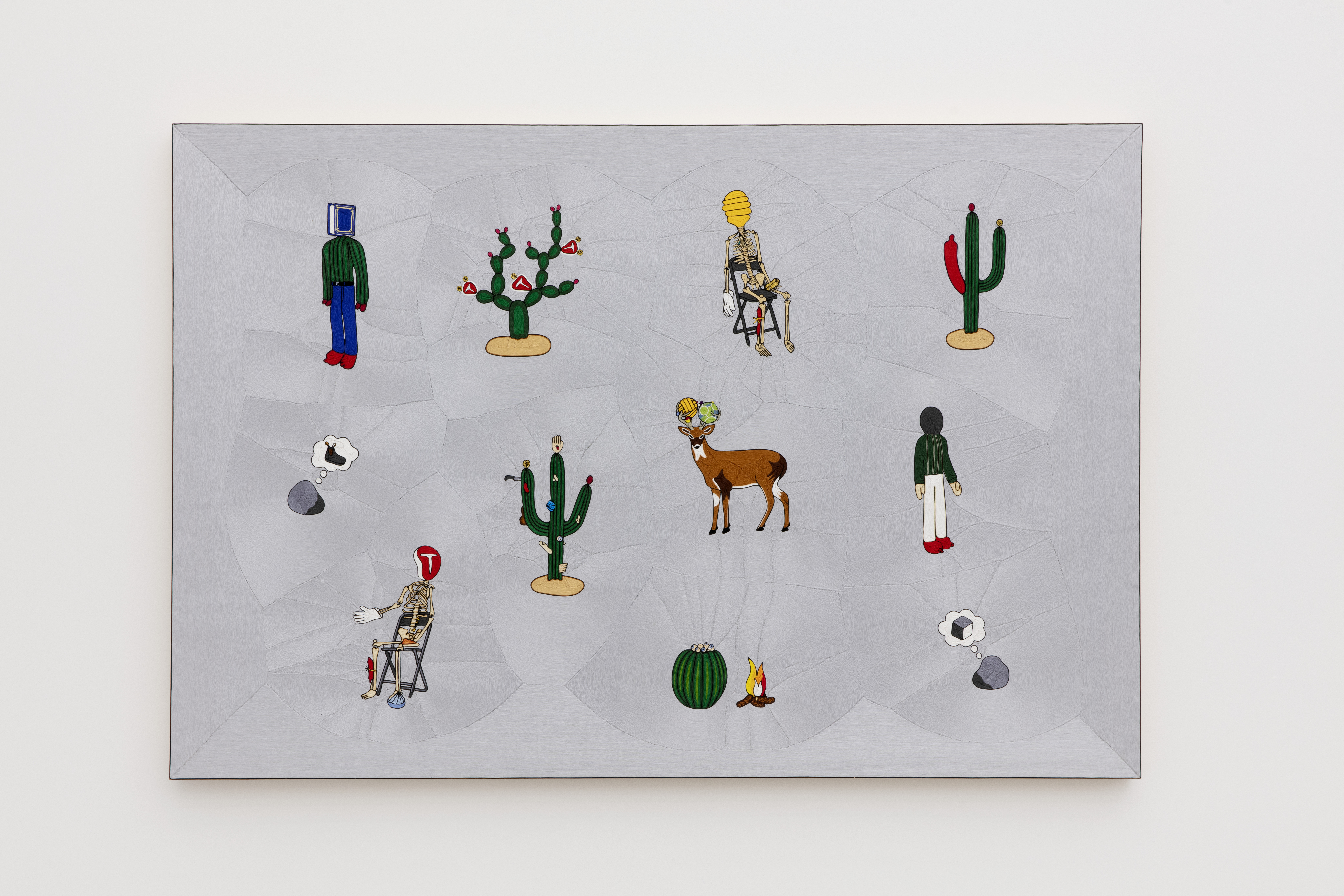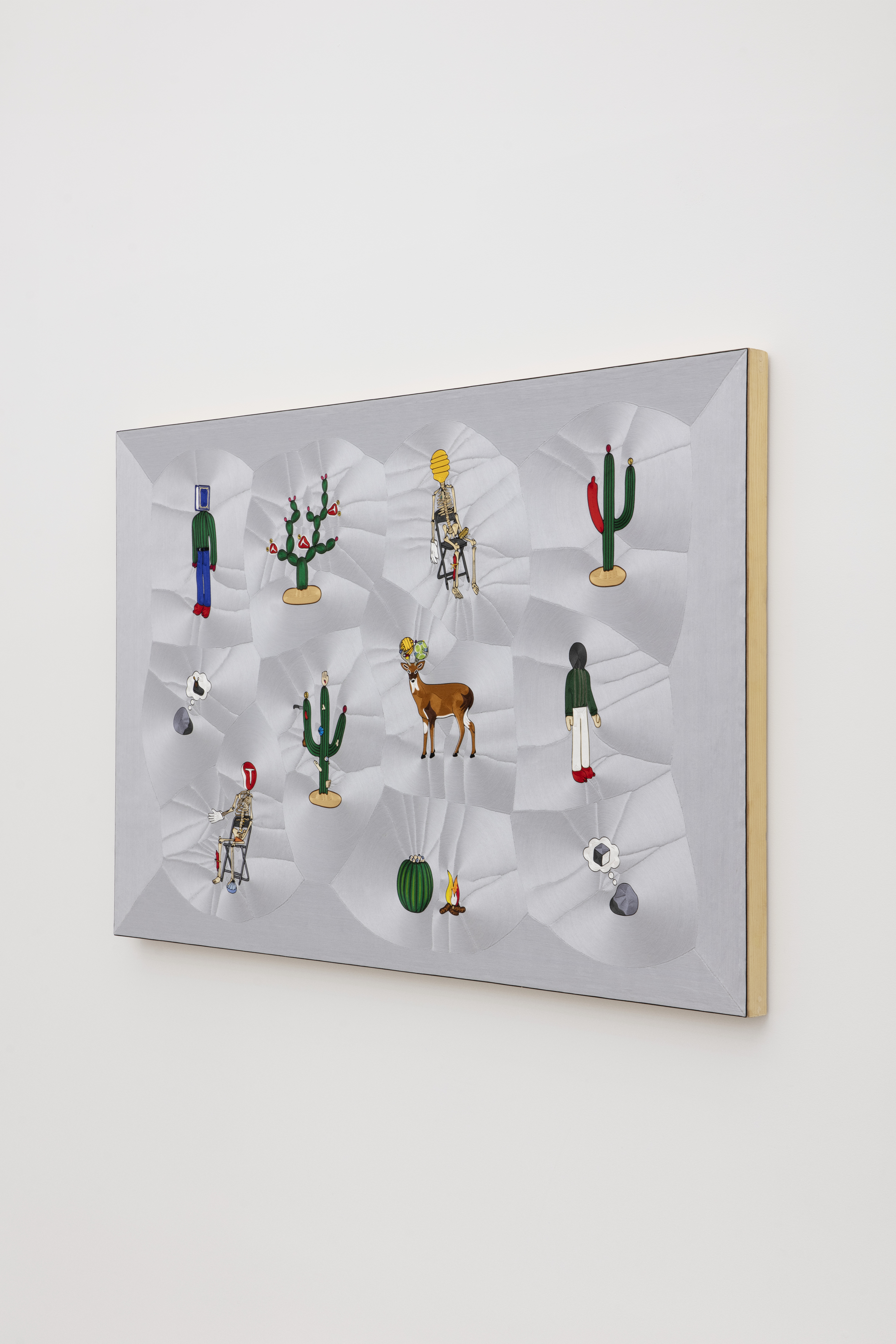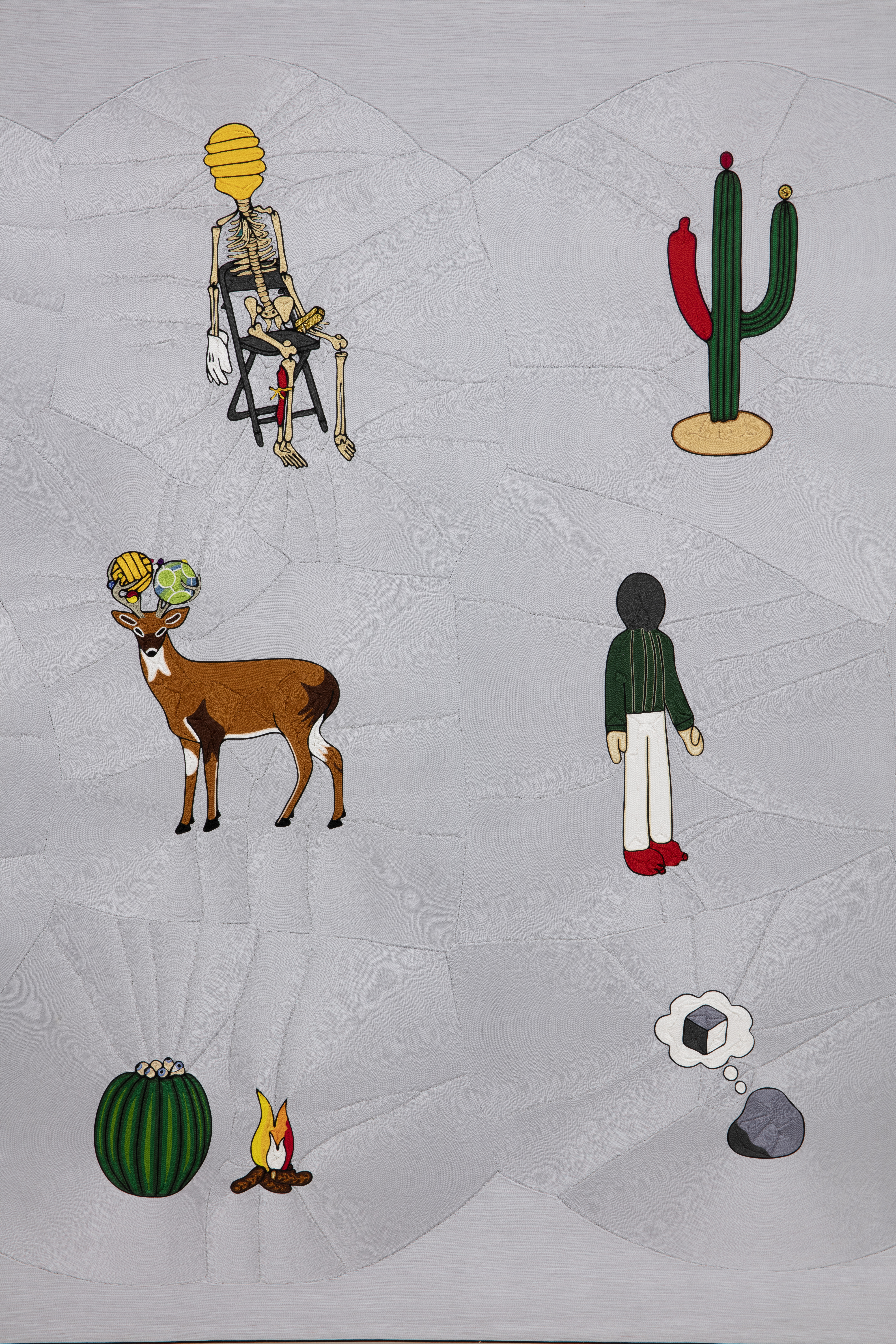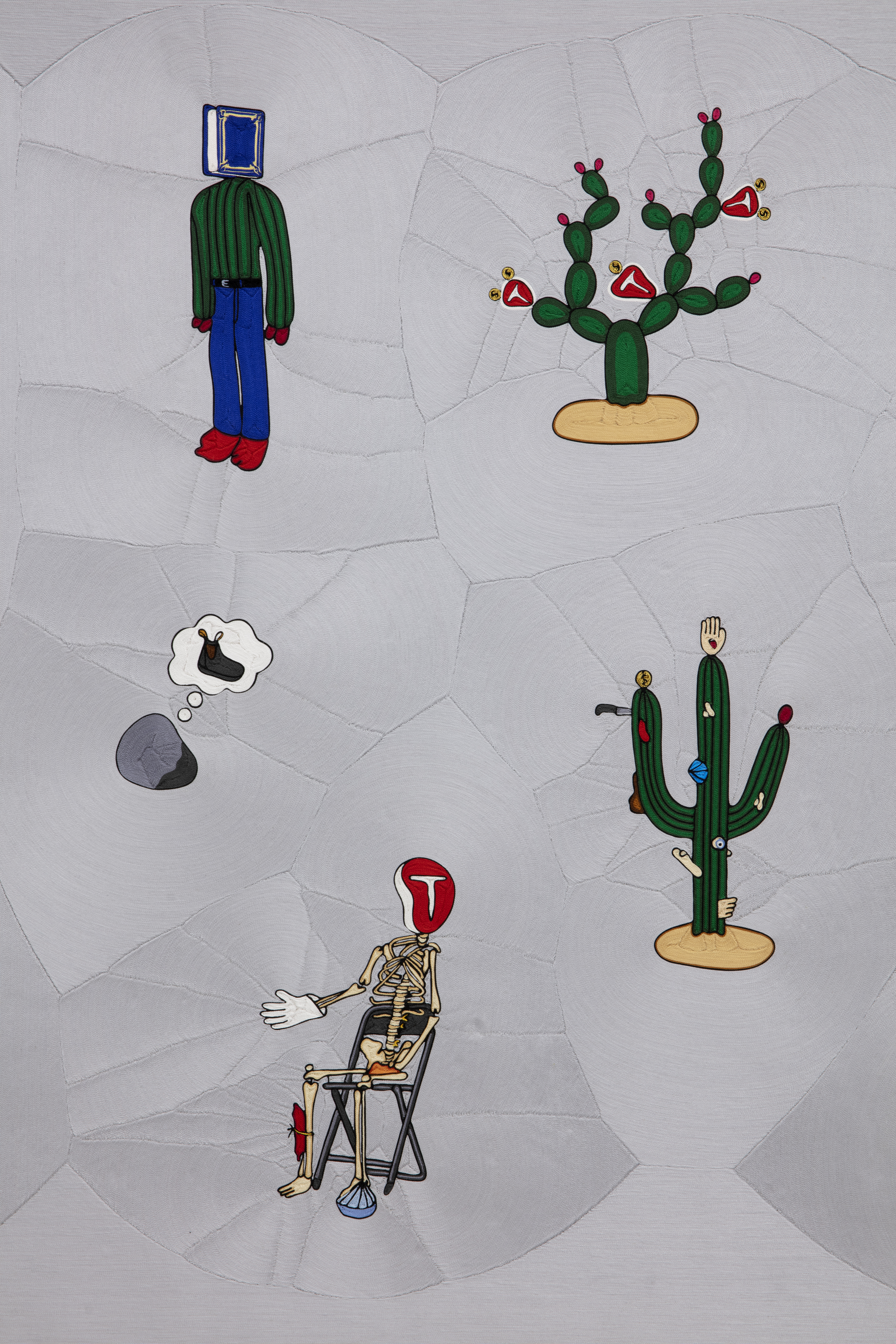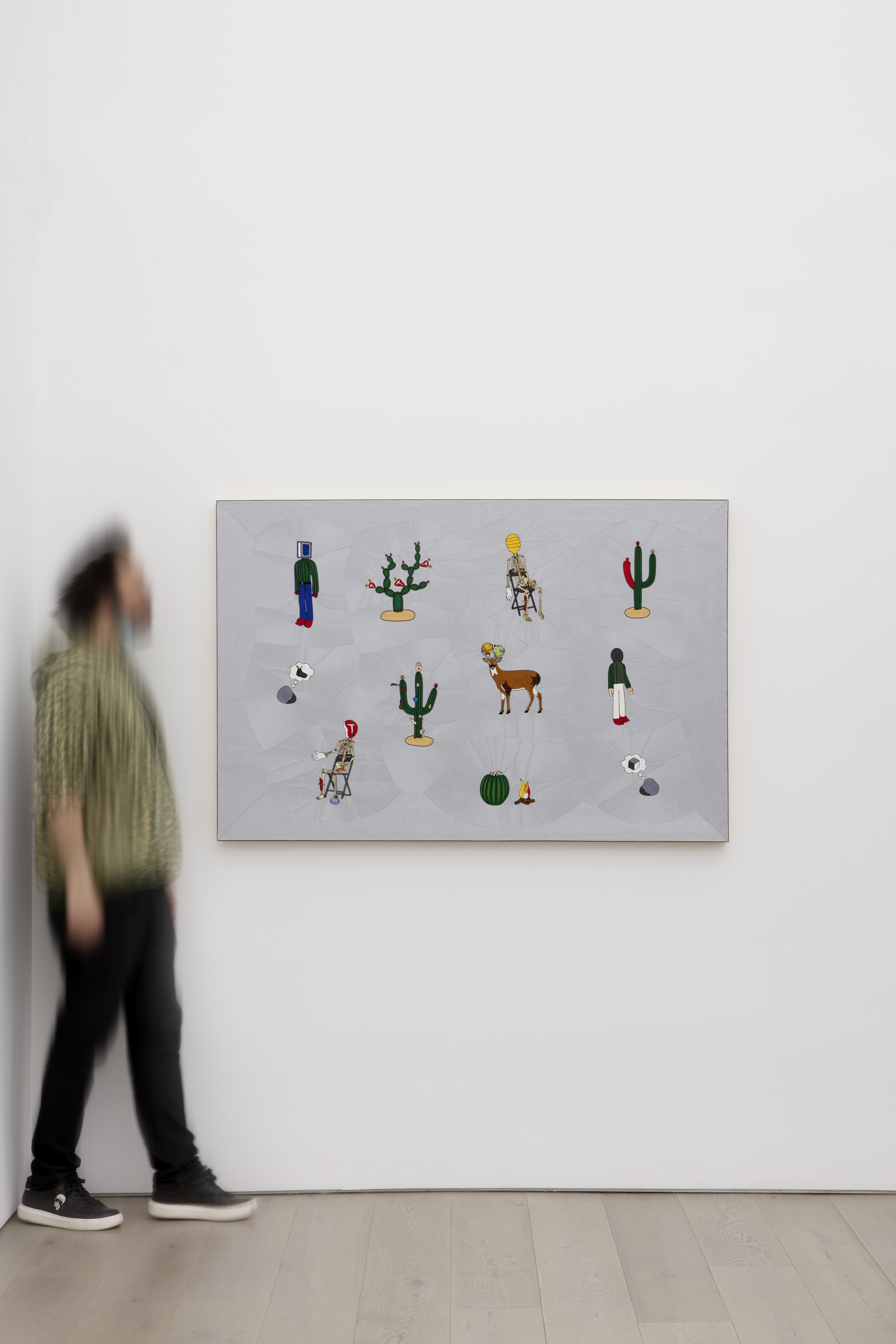
“For some time, I was looking for a technique that would allow me to transfer the aesthetic of some of my sculptures to a two-dimensional format in order to graphically enhance the visual force and magic of the pieces. This led me to find a traditional technique known as ¨Nierika¨, images created through spreading beeswax onto wooden boards, and pressing in hand-painted yarn designs, crafted by the Wixarikas or Huicholes in San Andrés Cohamiata, a village in the middle of a mountain range in the north of the state of Jalisco, México. This technique is used to represent the gods of these people, and also to represent the visions that their shamans have. I believe that this makes the relationship between the images that are depicted in this series and their meaning clearer. When I saw the first finished piece, I noticed the very precise way in which “Nierika” complemented the pieces belonging to this series and I included that relevance in the title choice. The original meaning of the sculptures from which these worsted yarn pieces were inspired was restructured and found a clearer meaning – the empty space represented by pale gray is fragmented by the images in the picture, and these conditions in this space are what I seek when I produce new pieces. These pieces were elaborated in the family workshop of the master Manolo Castro Montoya ‘’Muwieritemay’’.
- Gabriel Rico
--------------
The Wixárikas (“the people”), commonly known by their Spanish name Huicholes, are an ethnic group of Mexico living in the Sierra Madre Occidental range in the states of Nayarit, Jalisco, Zacatecas, and Durango. One of the ritual artifacts created by this community is the Nierika, which among other objects, can be a squared wooden board covered on one or both sides with beeswax into which threads of yarn are pressed. The Wixárika universe relays in a Quincunce structure (a geometric pattern consisting of five points arranged in a cross, with four of them forming a square or rectangle and a fifth at its center), present in the polygonal shapes formed with the yarn of these boards. Some of them include a hole in the center of the board used to see “to the other side”, to the world of the ancestors. The Nierika symbolize the “gift of seeing”, a spiritual capacity obtained by the initiated or Mara’akate (“godly-men” or shaman’s) through self-sacrifice, austerity, pilgrimages, and other visionary practices. The materials also hold a symbolical meaning according to their cosmogonic myths. The threads represent the Kawitu, which portrays “the path of the caterpillar”, an entity that leads the pilgrims and weaves the world. At the end of the path, the caterpillar transforms into a butterfly, just as the beginners become Mara’akate. The beeswax stands for the entity Tsitsikame or “bee person”, who was the first singer of the Mitote, a dance that expands the world into space. Together, all these elements recreate the world with its Quincunce structure.
